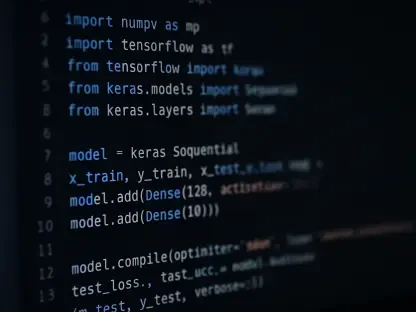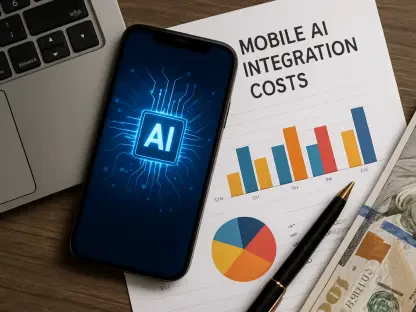In the fast-evolving landscape of enterprise software development, a staggering statistic reveals the urgency for innovation: nearly 70% of digital transformation initiatives fail due to outdated development processes and prolonged timelines. Enter vibe coding, a disruptive paradigm that blends human creativity with AI-driven precision to revolutionize how enterprises build applications. This approach, characterized by conversational speed and intelligent collaboration, is rapidly gaining traction as a solution to streamline complex coding tasks and accelerate market responsiveness.
Understanding Vibe Coding in the Enterprise Landscape
Vibe coding represents a groundbreaking shift in enterprise software development, moving away from labor-intensive manual coding to a collaborative model where developers articulate needs in natural language, and AI systems handle the intricate technical execution. This methodology empowers teams to create, test, and deploy applications with unprecedented efficiency, breaking down traditional barriers in the development lifecycle. By focusing on intuitive interaction, vibe coding is redefining productivity standards across various sectors.
The significance of this approach lies in its alignment with the broader industry trend toward automation and digital transformation. As enterprises grapple with the need for agility in a competitive market, transitioning from conventional programming to AI-enhanced collaboration offers a strategic advantage. This shift enables not only faster development cycles but also broader accessibility, allowing non-technical stakeholders to contribute to app-building processes.
Key players like Salesforce, with its innovative Agentforce Vibes platform, and Lovable, a Swedish startup, are at the forefront of this movement. Salesforce leverages advanced AI to integrate seamlessly with existing systems, while Lovable fosters community-driven innovation through its agentic AI engine. Together, these pioneers illustrate the expansive scope of vibe coding in driving transformative change, from large-scale corporate solutions to creative, user-centric applications.
The Rise of AI-Driven Development Models
Key Trends Shaping Vibe Coding
One of the most prominent trends propelling vibe coding is the widespread adoption of AI-powered platforms that simplify intricate development tasks. These tools prioritize conversational speed, enabling developers to describe app requirements casually while AI translates them into functional code. This trend underscores a growing preference for intuitive interfaces that reduce technical overhead and enhance collaboration.
Emerging technologies, such as cutting-edge AI models like GPT-5 and Qwen 3.0, are further accelerating this transformation. Additionally, platforms like Lovable emphasize community-driven innovation, where users share and build applications collaboratively, mirroring content creation ecosystems. Such advancements highlight a dynamic shift toward inclusive and interactive development environments that cater to diverse user needs.
Another critical factor is the evolving demand for scalability, efficiency, and accessibility in enterprise software delivery. Organizations increasingly seek solutions that can handle large-scale operations without sacrificing speed or user-friendliness. Vibe coding addresses these needs by offering adaptable frameworks that integrate seamlessly with existing infrastructures, ensuring that enterprises remain agile in responding to market shifts.
Market Growth and Future Projections
The market for vibe coding platforms is experiencing rapid expansion, fueled by rising enterprise demand for faster and more efficient software development tools. Industry insights suggest that adoption rates are climbing steadily, with significant growth projected over the next few years from this year to 2027. This surge reflects a broader recognition of AI’s potential to streamline complex workflows.
Looking ahead, forecasts indicate that AI-driven tools will become integral to software development, potentially redefining industry benchmarks for innovation and delivery timelines. The ability to move from concept to deployment at conversational speed is poised to become a standard expectation, pushing enterprises to integrate vibe coding solutions into their core strategies.
This forward-looking perspective also anticipates a democratization of development capabilities, as free tools and accessible platforms lower entry barriers. As more organizations embrace these technologies, the competitive landscape is likely to shift, rewarding those who prioritize speed and adaptability in their digital transformation efforts.
Challenges in Adopting Vibe Coding for Enterprises
Despite its promise, integrating vibe coding into enterprise environments presents notable hurdles, particularly around security and governance. Ensuring that AI-generated code meets stringent compliance standards while protecting sensitive data remains a top concern for many organizations. Resistance from developers accustomed to traditional methods also poses a barrier to widespread adoption.
Technological challenges further complicate this transition, including compatibility issues with legacy systems and the need for comprehensive training to maximize AI collaboration. Many enterprises find that existing infrastructures are not readily equipped to support these advanced tools, necessitating significant updates or overhauls. Bridging this gap requires careful planning and resource allocation to avoid disruptions.
To mitigate these obstacles, strategies such as leveraging platforms with built-in trust mechanisms, like Salesforce’s Trust Layer, can provide a secure foundation. Additionally, investing in developer education programs to build familiarity with AI tools is essential. By addressing these concerns proactively, enterprises can smooth their path toward successful implementation of vibe coding solutions.
Governance and Security in Vibe Coding Platforms
Maintaining enterprise-grade standards is paramount in the adoption of vibe coding, with a strong emphasis on security, scalability, and regulatory compliance. As AI tools handle sensitive data and critical processes, robust frameworks are necessary to safeguard against vulnerabilities and ensure consistent performance across large-scale operations. This focus on reliability is non-negotiable for businesses in regulated industries.
Platforms like Agentforce Vibes exemplify how governance can be integrated into vibe coding ecosystems, aligning AI outputs with internal branding and standards. Such systems incorporate protocols to maintain consistency, ensuring that applications reflect organizational values while adhering to compliance requirements. This balance between innovation and control is critical for building trust in AI-driven development.
Regulatory considerations and data protection also play a pivotal role in shaping safe adoption across sectors. Enterprises must navigate a complex landscape of privacy laws and industry-specific mandates to avoid legal pitfalls. By prioritizing transparency and accountability in vibe coding platforms, businesses can foster confidence among stakeholders and pave the way for broader acceptance of these transformative tools.
The Future of Enterprise Software with Vibe Coding
The potential evolution of vibe coding points to a future where innovation occurs at an accelerated pace, meeting market demands with remarkable efficiency. As AI collaboration becomes more sophisticated, enterprises can expect to tackle complex challenges swiftly, creating tailored solutions that drive competitive advantage. This trajectory promises to redefine how software is conceptualized and delivered.
Emerging possibilities, such as the proliferation of free tools through platforms like Salesforce and the expansion of community-driven ecosystems like Lovable, suggest wider accessibility on the horizon. These developments could empower a diverse range of users, from corporate developers to independent creators, to participate in app-building. Such inclusivity is likely to spur creativity and broaden the impact of vibe coding.
Influencing factors, including technological advancements, global enterprise needs, and economic conditions, will continue to shape this landscape. As AI models grow more advanced and integration capabilities improve, the adaptability of vibe coding to varying contexts will be tested. Keeping pace with these dynamics will require ongoing investment in research and development to ensure that the technology remains relevant and effective.
Conclusion: Vibe Coding as a Catalyst for Innovation
Reflecting on the insights gathered, vibe coding emerges as a powerful force that reshapes enterprise software development by harmonizing human ingenuity with machine efficiency. Its capacity to expedite app creation while upholding critical standards like security and scalability marks a significant milestone in the journey of digital transformation. The exploration of platforms like Agentforce Vibes and Lovable underscores a diverse yet unified push toward innovation.
Looking ahead, enterprises are encouraged to deepen investments in AI collaboration tools, prioritizing integrations that enhance workflow efficiency. Building robust training programs to familiarize teams with these technologies stands out as a vital next step to overcome adoption barriers. By fostering a culture of continuous learning and adaptation, businesses can unlock the full potential of vibe coding.
Furthermore, collaboration among industry stakeholders to establish clear governance frameworks is seen as essential for sustaining trust and compliance. As the landscape evolves, staying attuned to regulatory shifts and technological breakthroughs offers a pathway to maintain relevance. These actionable steps promise to solidify vibe coding’s role as a cornerstone of future enterprise success.









